Text
Here's one of my latest drawings I did for a friend (featured on the right). Its going to be the cover for his upcoming anime-focused podcast he's hosting with his friend. So I decided to draw them both in two different anime styles!

0 notes
Text
0 notes
Text
youtube
youtube
youtube
youtube
youtube
youtube
youtube
youtube
youtube
0 notes
Text
Video Art - Introduction Video
Hey guys! Im Aaron Mercer. Im an animation major, and this is technically my last semester at Fresno State.
It was kinda challenging for me figuring out how to approach this video, and I ultimately decided to keep it simple with a few things I enjoy. I did record some of the clips for this project, but I utilized some other videos I already had on my phone that could potentially work with this. I feel it turned out alright, and you do get a little glimpse into some of my interests.
0 notes
Text
Video Art - Introduction Video
Hey guys! Im Aaron Mercer. Im an animation major, and this is technically my last semester at Fresno State.
It was kinda challenging for me figuring out how to approach this video, and I ultimately decided to keep it simple with a few things I enjoy. I did record some of the clips for this project, but I utilized some other videos I already had on my phone that could potentially work with this. I feel it turned out alright, and you do get a little glimpse into some of my interests.
0 notes
Text
Research Post 8 - William Egglston
William Eggleston’s Guide, was a collection of Eggleston’s work paired with an essay written by John Szaekowski. Eggleston showcases something similar to a family album, with pictures of friends, family, and neighboring houses and public buildings in his local scene in Memphis, Tennessee, and throughout areas in the Deep South.
What’s unique about his work in particular was that it was a part of the New York Museum of Modern Art’s first color photography publication back in 1969-1971. Consisting of 48 refined images, Eggleston’s work showed the world moments and landscapes of his Memphis hometown closer to reality than ever before with the
I really liked how he showcased what seems like casual moments in life, scenes with little to no action, focusing more on the scenery of the towns, like the architecture and landscape in some, balanced with some interior scenes of people subjects. While they may seem mundane shots, they all are very well composed and thought out, experimenting greatly with scale, perspective, form, texture, color, value, and balance, and line.
And the thing that makes Eggleston’s work so inspiring is that it shows that anyone can be a photographer. You don’t have to have an expensive camera or a high quality production, and you don’t need to travel the world to photograph luxurious places or nature. Just taking photos of simple scenes in your hometown is a start. As long as your eye is in the right perspective, you compose an interesting scene with your surroundings, and you wait for the right time of day to get complimentary lighting, you can compose really great images. His work really inspired me as I worked on my Kingsburg theme project, since I wanted to create similar compositions whilst focusing a bit more on the main symbolic spots of my town vs seemingly random buildings with no real relevance. While some of Eggleston’s images remain interesting, without the context of the architecture and the other subjects themselves, it leaves a little to be desired of his collection.
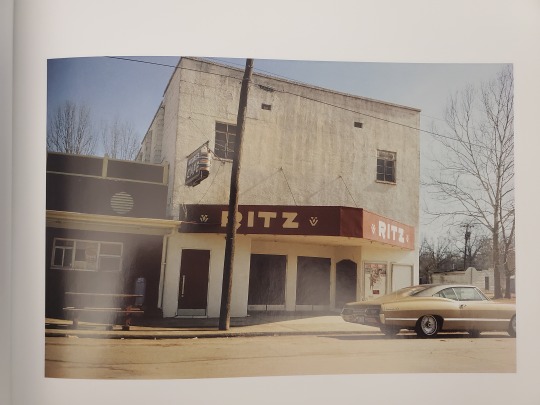
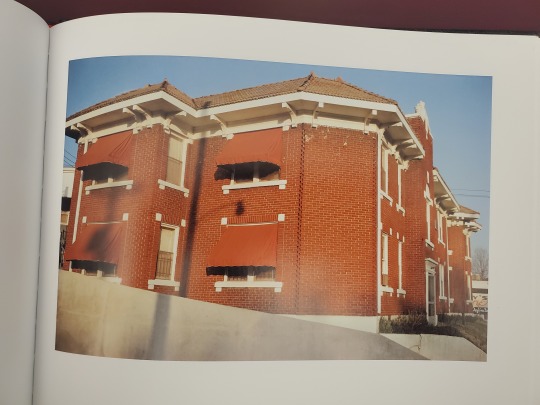


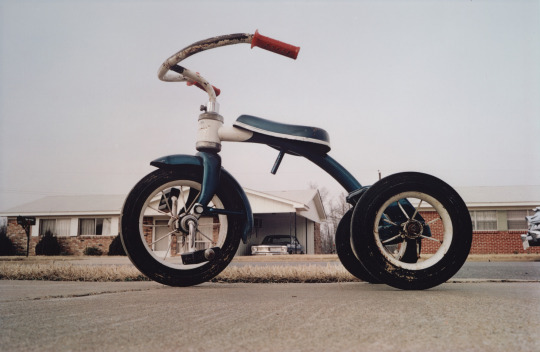

William Eggleston’s Guide. Museum of Modern Art, 2002.
0 notes
Text
Research Post 7 - Walker Evans
Walker Evans' work in the book Walker Evans: Florida, showcases the unique charm of the western coast of Florida in the early 40s. The body of work was commissioned by writer Karl Bickel in 1941, who published the photographs in his book titled The Mangrove Coast. While this book I’m researching was published in the year 2000 accompanied by an essay by Robert Plunket, the fact that these images were from 6 decades prior makes it much more of a historical documentation of what things were like back then, even more so now it being 8 decades. In America’s entertainment state, Evans focused his camera on busted and worn down architecture, busy street scenes, pelicans, trailers and railroad cars, and circuses. All of the varying subject matter makes you think that Evans is traveling all over the world seeing this vast array of stuff, seemingly foreign to one another, yet the fact that all of it was taken within a single state is astounding. Seeing grand architecture on one page, and a handcrafted circus venue with elephants seems so unordinary, but it really works to show the world what Florida was really like during that time. I really enjoyed seeing this era of the past. It’s always so compelling to see how the world was back then, and it seemed even more different than I would've expected in Florida.
I also love the look of the photographs from the 1940s; his are black and white, and his also have a green tint, which is evident in the photo of the elephants. This photo was taken directly from the book, the others were from online sources which may have removed the tint for a cleaner image. I personally liked the tint in the book, since it gave his photos a unified aged appearance. He also captures a ton of texture from the circus animals and pelicans, and has a strong sense of value and contrast throughout all of his photographs from things like billboards and more mechanical subjects like boats, cars, and the circus trailers with their elaborate detail of classical inspired decor.

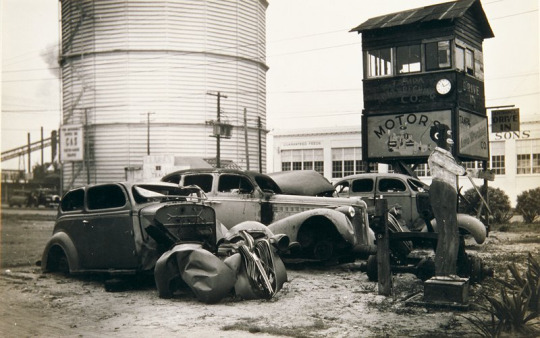
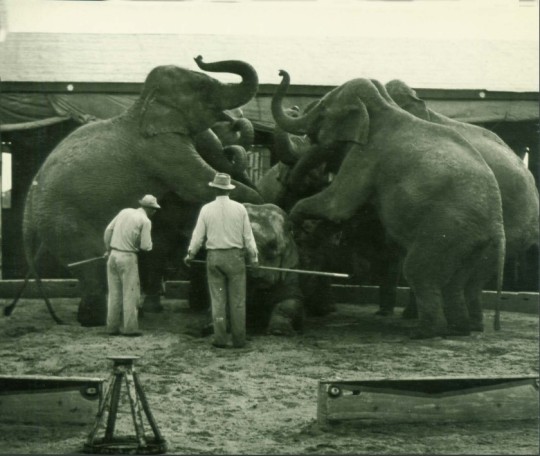
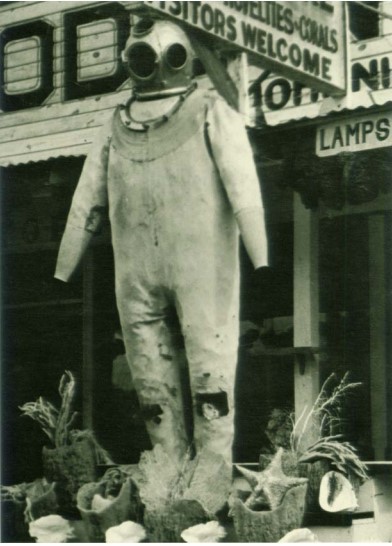
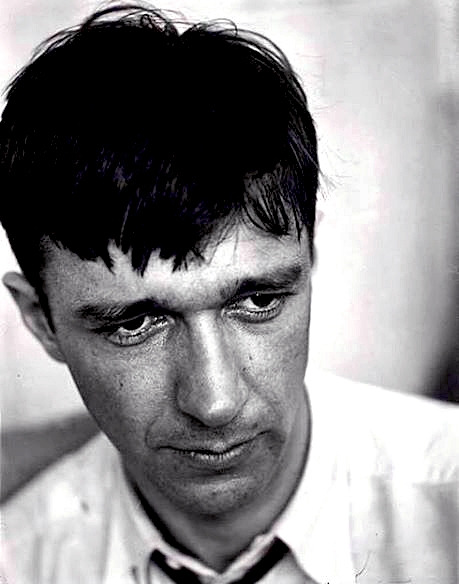
Evans, Walker, and Robert Plunket. Walker Evans: Florida. J Paul Getty Trust Publications, 2006.
0 notes
Text
Project Proposal
My goal is to photograph my dad, Kevin Mercer, as he maintains the 10 acres of walnut trees at our home just outside of Kingsburg. He grew up in Madera, California, and has spent 40+ years in the farming industry; from packing houses, to field management, to selling tractors. Moved into the place we’re at now in 2000. The field has produced apple trees, alfalfa, eggplants and from 2015-now, walnut trees.
The way I’ll approach this project is to be right there with my dad and capture his actions, with varying perspectives, throughout the days he’s working in the field, so you get some detailed close-up shots, but also some wider angle shots to show the scale of the environment. I want to pose him as little as possible, so his actions feel natural with no manipulation.
For this project, my aim is to introduce my dad, and give a brief overview of what he does at this time of year in order to maintain his walnut tree farm, going through a majority of the main jobs he has to do. This includes things like prepping the tractor, mowing, watering the field, driving through the field, and just checking on the trees. I want the audience to feel as if they’re right there with him getting the tractor ready, and observing the trees. I also want to show a bit of him away from the field, like what he does in his free time.
0 notes
Text
Research Post 6 - In the Sunshine of Neglect
In the Sunshine of Neglect was originally an exhibition at both the UCR ARTS: California Museum of Photography and the Riverside Art Museum. It featured 54 photographers and 194 photographs; the first Index exhibition of photographic work that's been done in inland southern California. The photographs featured included the works of: Douglas McCulloh and his Dream Street series, John Divola, Sant Khalsa, Julie Shafer, Noah Berger, Lewis deSoto, and more.
Douglas McCulloh curated this show, gathering these 50+ photographers who had engaged photography in different ways within inland southern California, a region of 4 1/2 million people and 27,000 square miles. It's an edge and neglected area of Los Angeles, because of this neglect there is freedom for artists to find new directions and to essentially expand the vocabulary of photography, especially as it engages with the built landscape as a central theme of this exhibition. The original thought behind the title and premise was that it's a neglected region that has never had a show of its photographic history. So essentially, this show is work that has not ever been assembled together; a missing piece of photo history. The central theme of this exhibition is photographers using this landscape as a clean slate and a laboratory for experimentation.
I enjoyed seeing many perspectives and styles of the similar collective whole of southern California. I liked seeing the various minds at work, and the choice of their theme of focus; some honed in on the landscapes like Julie Shafer, Lewis deSoto, and Noah Berger, while others like John Divola and Douglas McCulloh focused in on the interiors and more personal subject matter. It’s cool to see so many different styles and techniques from amazing photographers, yet all the work was done in a small section of the world. It really gives a new perspective of all the talent out there in just photography alone.
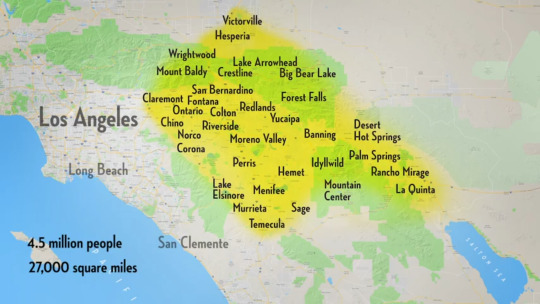
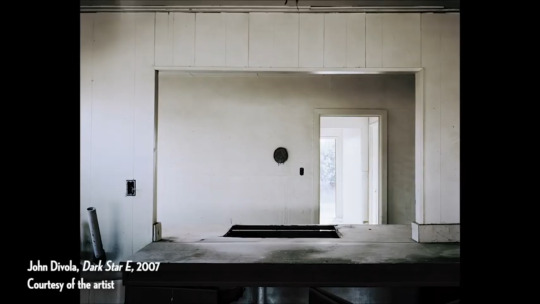

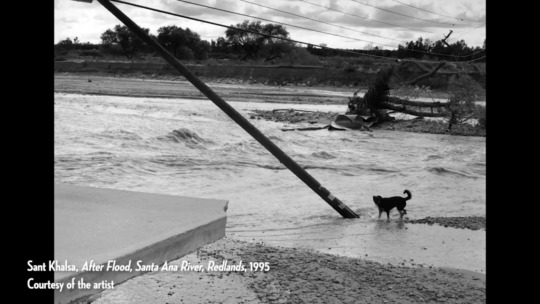


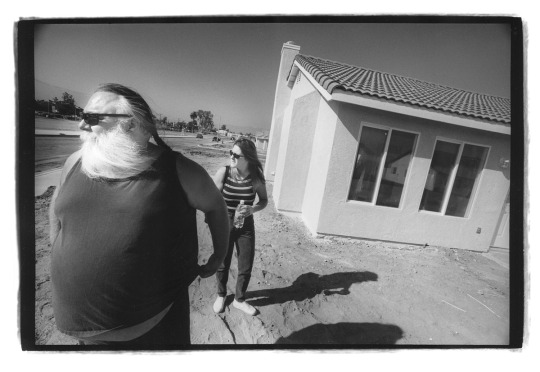
Douglas McCulloh, Dream Street
McCulloh, Douglas. Curator Douglas McCulloh on "In the Sunshine of Neglect". YouTube, UCRARTSblock, 22 Apr. 2020, https://www.youtube.com/watch?v=tPfv5tEWzwY&ab_channel=UCRARTS. Accessed 07 May 2022.
0 notes
Text
Research Post 5 - Douglas McCulloh
Douglas McCulloh is a Southern California photographer, with a masters in fine arts from Claremont Graduate University. In his book Dream Street, he utilizes photography to capture the harsh realities of the home construction industry in southern California. He records the development of a new street of which he won the right of naming at a charity event. The excitement of this opportunity drives him to obsessively monitor and journal the progression of the neighborhood establishment of 134 homes on his very own “Dream Street” through his photography.
Some of McCulloh’s images themselves can be hard to figure out, some I’d have no clue what they depicted or what the meaning was, but with the context he provides with each image gives much needed exposition that helps inform the viewer of the narrative of his images. I felt this made the photos much more impactful. He does an amazing job recording what occurred, with his interviews of the local folk and construction workers, and even what he did before or during the shot.
One that stood out to me was the first image I’ve provided. This intense motion blur would normally be shunned by amatuer photographers and some professional photographers, since the image is blurred/out of focus. Most would want their image clear so it closely depicts reality. This is still the case in McCulloh’s work, since both the camera and the subject seem to be in motion. This ultimately gives this image a strong sense of movement, which I feel really helps portray the action of the photo; the intense labor of home construction. For me, I generally like to have my photos as clear as possible because I love showing detail and texture in my photography, so I’d generally avoid using a low shutter speed, or move while I’m taking the photo. But just from this photograph alone, it shows me that you can be successful even with unconventional techniques used in the proper setting or with the right purpose.




0 notes
Text
Research Post 4 - Matt Black
Matt Black is a famous freelance documentary photographer born in Santa Maria, California. A member of Magnum Photos, he has received many awards, including the W. Eugene Smith award. In his book American Geography, he photographed in 46 states over the course of 6 years, focusing on poverty seen in the modern American landscape through the people, and in the landscape itself. He wanted to focus on the areas of the United States seemingly ‘unknown’ to the rest of the country in the sense that they don’t realize how bad it really is in some communities. He sheds some light on some of the poorest neighborhoods, displaying harsh conditions with his stark contrasted black and white images, and sharp texture showcasing the worn and tattered roads, buildings, and people.
I really love the high contrast and range of value throughout his work. It really shows the reality of these conditions, leaving no details or flaws behind. The strong textures really bring a good sense of realism as well, like the field of flowers in the first photo, and the cracked asphalt in the second photo. It really inspires me to not overlook details in a setting, as even the littlest things can tell a story or at least give some information about the subject or landscape. The way he composes his photos is compelling as well, working with perspective through the foreground and background to give depth and balance within the frame. I feel this portion of his work where he focuses primarily on the landscapes of towns in poverty is in the realm of my A Walk Through Kingsburg theme project, where I focused on Kingsburg’s architecture. Matt Black’s work is inspiring to me because not only does he create beautiful images with interesting subjects and design, he also brings a story with it with the theme of poverty, which gives the work meaning and emotion. This is something I strive to implement in my own work.



0 notes
Text
Research Post 3 - Chris Jordan
Chris Jordan is an American photographer based in Seattle. During the zoom meeting, he starts by telling us that we have to face the reality of our world, and not live in denial. In his work, he aims to cut through all the layers, and actually say something that matters, like in the Intolerable Beauty series: portraits of America’s issue of mass consumption and disposal culture. This is also prevalent in his works Running the Numbers and Running the Numbers II. He’d take a small sample of, say, 20 birds, 50 bags, or a small collection of plastic bottles, and rearrange them to get many photo variations, then stitch these photos together in mass quantities to show an estimated number representation of said items being killed or dumped, all in one image. While these series are full of bad news, he said we have to keep looking at it.
It's a paradox that we are too small to make a difference, yet all of us make a difference with how we’re impacting the Earth via mass consumption and our throw-away culture.
Even with this daunting issue, he doesn’t want to instill fear into young people. He said that it’s just a miracle that we’re even here, so even with all the bad, it becomes invisible when we become aware and connect with the beauty of our world. He wants us to love and be grateful for our life and this world. To just be free.
In this zoom meeting, he showcased his integrity; doing good deeds just to do them, not for some ulterior motive. To just make art, and willing to give it away to the world.
Before he left, he gave us some tips, like to develop a practice of self awareness. He believes it takes no talent nor creativity to be a great photographer, but in order to make deep art, you need to deepen yourself.
This meeting with Chris Jordan was extremely inspirational and eye-opening, not just on how to be a good photographer, but on how to look at our world, and what we need to do in order to change it.

Over the Moon, 2011, 44x44" and 60x60"
Depicts 29,000 credit cards, equal to the average number of personal bankruptcy filings every week in the US in 2010

Midway: Message from the Gyre
(2009 - Current)

To the End of the World
(Punta Arenas, Chile, 2021-2022)
0 notes
Text
Research Post 2 - Annu Palakunnathu
Annu Palakunnathu was born in Stourport-on-Severn in England. She started as a still photographer after leaving her initial major in mathematics, working on her 2 decade endeavor the Memories of India, capturing the sensory details of her homelands culture when she moved there at 10 years of age. Using a cheaper camera, she was able to utilize the natural chromatic aberration and vignette the camera produced, which gave her photos much more of a memory-like feel. Her next body of work was titled Bollywood Satirized. Compared to her first works consisting of her love of India, this new series focused on critiquing some of the gender disparity she herself and other women experienced growing up in India. She would make parody posters of Bollywood movies as satire, poking at the stereotypes and customs.
I really enjoyed seeing all of Annu’s work. For me, I have never really focused on any societal issues in my photography, so I commend her for willingness to speak her mind about issues she experienced in her life through her photography. I thought that it was very clever that Annu utilized aged cameras in her early work, as they definitely retain a unique feel that modern cameras have trouble replicating. Polaroid cameras are a prime example of this, since they’ve grown in popularity again recently because of the overall look and the feel of having a physical photograph just after taking the photo. I also like the idea of using photography and art in general as a tool to voice your thoughts and opinions about a topic without having to actually voice them audibly. It definitely adds a level of complexity to art that causes more discussion of a topic than if the topic or issue was just discussed in a book or at a conference. It gives both artists and viewers an avenue to discuss and protest various issues, and I believe that’s what makes art so important to our society.



0 notes
Text
0 notes
Text
Research Post 1- Ryan C Jones
Ryan C Jones is a Mexican-American photographer from Fresno that contributed to the New York Times, and is currently in a phD program in social anthropology at Harvard University where he continues to study the ways that the latinex and farming communities are responding to central California's increasingly worsening environment.
He discussed how to tell a story, even when it seems like nothing is happening. His tips were to know your audience, and to know what you’re photographing. Know the perspective and scale, and widen the scope of your subject. He captures stories of families and individuals, people in poverty and more specifically, immigrants.
Also strategies on how to ethically portray a subject was a big topic. You want to get to know them and get their message out there through their portrayal, making them look like a real person, and not in a bad light, and also not to exploit them for your own success.
The first story he discussed was the immigrant Amado. He photographed him for 8 months, talking to him, getting to know him, his feelings, and his story.
I really admired Ryan’s work, because of how passionate and dedicated he is to not only his work, but his subjects as well. I especially liked his story when he spent 3 weeks photographing Boston Priests during the height of the Covid outbreak. His eye for composing the scene that isn’t controlled or manipulated by his hand was amazing, with some shots looking so surreal just from his editing in post or techniques with the exposure and shutter speed.
His goal is to inform the world, he doesn’t think his work is art even if he does it artistically, because his audience is different. He doesn’t do it for the money, he doesn’t do it to show his work to the world for fame, he mainly does it because there are topics he wants the world to know about and be aware of. It’s a public service, not to express yourself but to give the world a new perspective of itself.

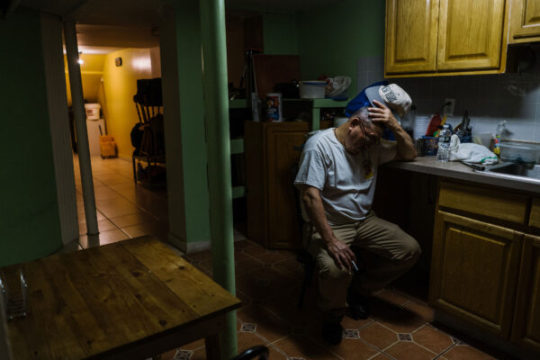

0 notes